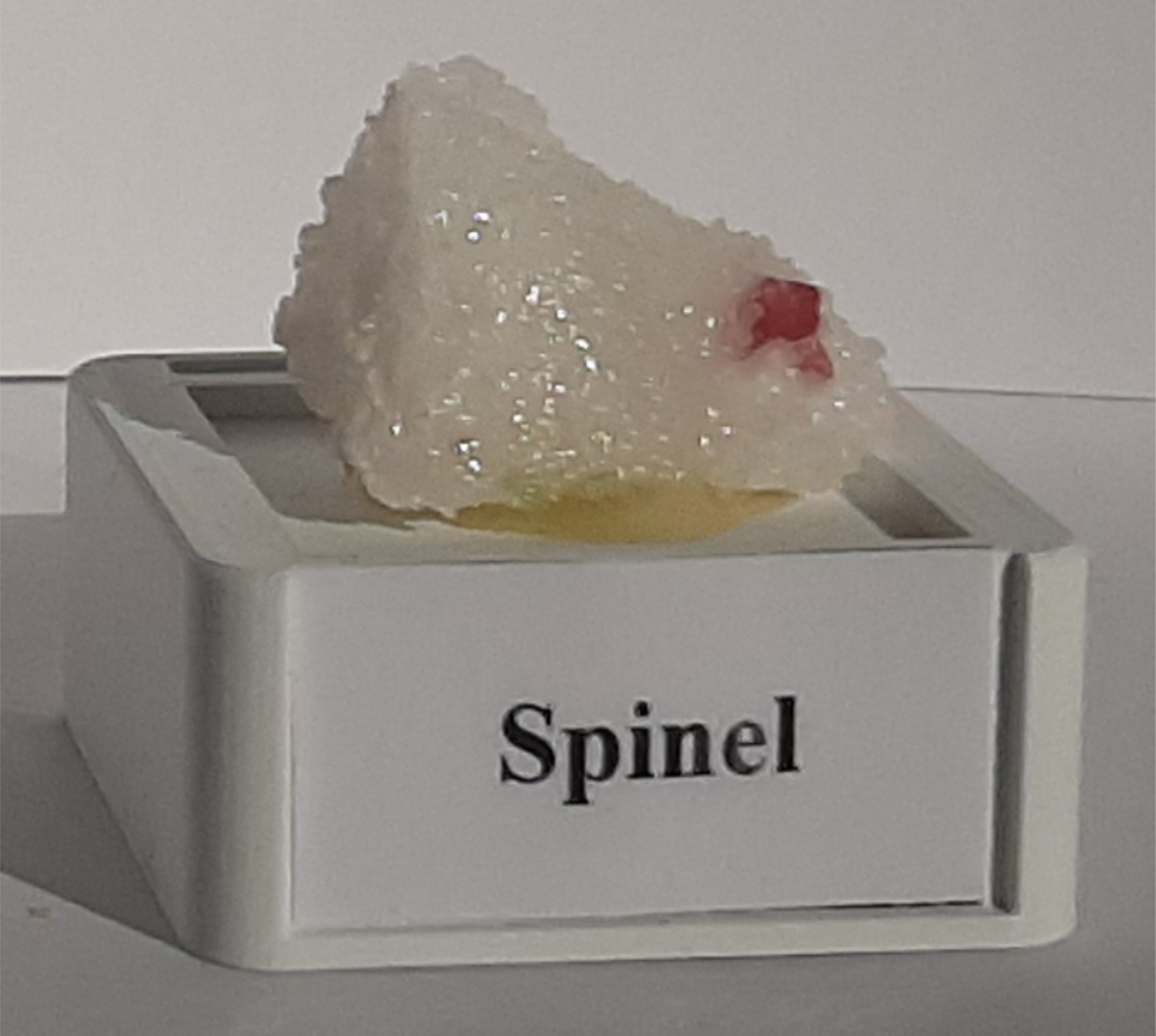
Spinel
oxides
3.58 do 4.06 g/cm3
regular
blurred
MgAl2O4
red, blue, green, dark brown, black
8 on the Mohs scale
glassy
Spinel and its varieties occur in the formations of the contact-metasomatic zone in altered dolomites and limestones containing magnesium oxides; are formed at high temperatures; it is often found in the company of minerals such as dolomite, magnetite, corundum and zircon; they are found in many places around the world, such as Thailand, Cambodia, USA, Madagascar, Canada, Italy; in Poland it is a rare mineral, small crystals may occur mainly in the gold-bearing sands around Złotoryja or in the alluviums of the Izera Mountains in the Karkonosze Mountains
Spinel is one of the minerals belonging to the group of oxides and is classified as a noble mineral; forms small octahedron-shaped crystals, often with rounded edges; twins, also granular clusters, are often encountered; crystals mainly incorporated; characterized by a glassy shine, indistinct cleavage and a conchoidal fracture; naturally occurs as red crystals, but may appear in other colours (caused by impurities such as iron or zinc); it is widely used in jewellery and for the production of highly fire-resistant ceramics
The name of this mineral comes from the Latin word spine, which means "arrow" because this mineral is often found with very sharp edges; spinel was only recognized as a mineral about 150 years ago because it was previously thought to be ruby, which often occurs with it; in 2019, in the "Łażany II" granodiorite mine near Strzegom, the presence of true spinel was found within the marble insert; this discovery is unique for two reasons: it is the first time spinel has been documented in the Strzegom-Sobótka massif and the first time in Poland this mineral has been described in the host rock; one of the most famous spinels in the world is the Black Prince's Ruby, a 170-carat gem adorning the Imperial Crown of Great Britain; it is the largest uncut spinel in the world and once decorated the helmet of King Henry V during battle; the Timur Ruby, which is also part of the British Crown Jewels, is actually a 361-carat polished red spinel; spinel can be found on several continents, from Brazil in South America, Kenya in Africa, and especially in the southern part of Asia, stretching from Afghanistan to Vietnam; occurs commonly in gravel deposits in Sri Lanka, Tanzania and Madagascar and in marble deposits in Vietnam


